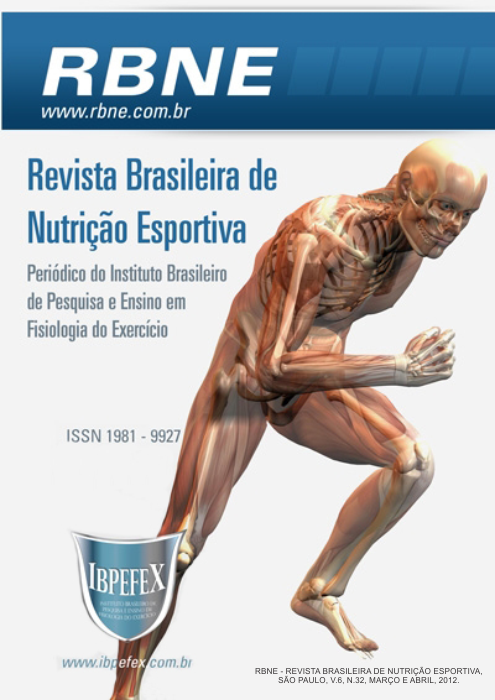Comparison of feed between practitioners and non-practitioners of regular physical activity
Abstract
Objective: Compare the profiles of two food groups,Practitioners (GP) and Non-Practitioners (GNP) of regular physical activity, noting that the group who reported regular physical activity adopts a balanced diet or stay with the same habits than sedentary individuals. Materials and Methods: The data in the diets of athletes and non-practitioners were obtained by applying the 24-hour recall (24HR) and then analyzed according to the adapted Healthy Eating Index (IASad) and graded according to the components that make up a healthy diet. Results: Individuals who participated in the survey have an average of 30 years (± 0.50)in morewomen (80%) than men (30%). The final average of the scores assigned to the group GP and GNP is 74 and 71 points respectively. The average values of points of different components of IASad were inadequate (below 5 points) for the groups fruits, vegetables and milk products in both groups.Discussion: By comparing the power of practicing and non practicing regular physical exercise was observed that the marks obtained by the group GP and GNP, no significant difference. In relation to the scores "healthy diet" in the GP group (13%) was higher than GNP in the group (8%), showing that the practice of physical exercises has led to better food choices in moderate amounts. Conclusion: Individuals wishing to obtain health through physical exercise have beenlimited by lack of proper nutritional guidance, showing the need of encouragement on the part of the gym coupled with public policies oriented to sports nutrition.
References
-Amaral, C. R.; e colaboradores. Perfil nutricional de atletas por modalidade esportiva. Nutrição Brasil. Vol. 3, Núm. 4, p. 232-239, 2004.
-Carvalho, T.; e colaboradores. Modificações dietéticas, reposição hídrica, suplementos alimentares e drogas: comprovação de ação ergogênica e potenciais riscos para a saúde. Diretriz Revista Brasileira de Medicina do Esporte. Vol. 9, Núm. 2, p.1-11, 2003.
-Duran e colaboradores, Correlação entre consumo alimentar e nível de atividade física habitual de praticantes de exercícios físicos em academia. R. bras. Ci. e Mov. Brasília. Vol. 12. Núm. 3. p. 15-19. 2004.
-Mota, J.F.; Rinaldi, A.E.M.; Pereira, A.F.; Maestá, N.; Scarpin, M.M.; Burini, R.C. Adaptação do índice de alimentação saudável ao guia alimentar da população brasileira. Rev. Nutr. 2008.
-Quintão e colaboradores. Estado nutricional e perfil alimentar de atletas de futsal de diferentes cidades do interior de Minas Gerais. Rev Bras Futebol.2009.
-Santos, S. C.; Knijnik, J. D. Motivos de adesão à prática de atividade física na vida adulta intermediária. Revista Mackenzie de Educação Física e Esporte. Ano 5, Núm.1, 2006.
-Semíramis, M.A.D.; Tendências de consumo de alimentos industrializados pela população brasileira. Faculdade de Nutrição PUC-Capminas, 2003.
-Tiveron, R.Z.; Gatti, R.R.; Silva, R.; Análise quantitativa da ingestão alimentar de atletas de uma equipe de futsal masculino de Guarapuava-PR, Rev. Bras. Med Esporte, 2006.
Authors who publish in this journal agree to the following terms:
- Authors retain the copyright and grant the journal the right of first publication, with work simultaneously licensed under the Creative Commons Attribution License BY-NC which allows the sharing of the work with acknowledgment of the authorship of the work and initial publication in this journal.
- Authors are authorized to enter into additional contracts separately for non-exclusive distribution of the version of the work published in this journal (eg, publishing in institutional repository or book chapter), with acknowledgment of authorship and initial publication in this journal.
- Authors are allowed and encouraged to post and distribute their work online (eg, in institutional repositories or on their personal page) at any point before or during the editorial process, as this can bring about productive change as well as increase impact and impact. citation of published work (See The Effect of Free Access).






